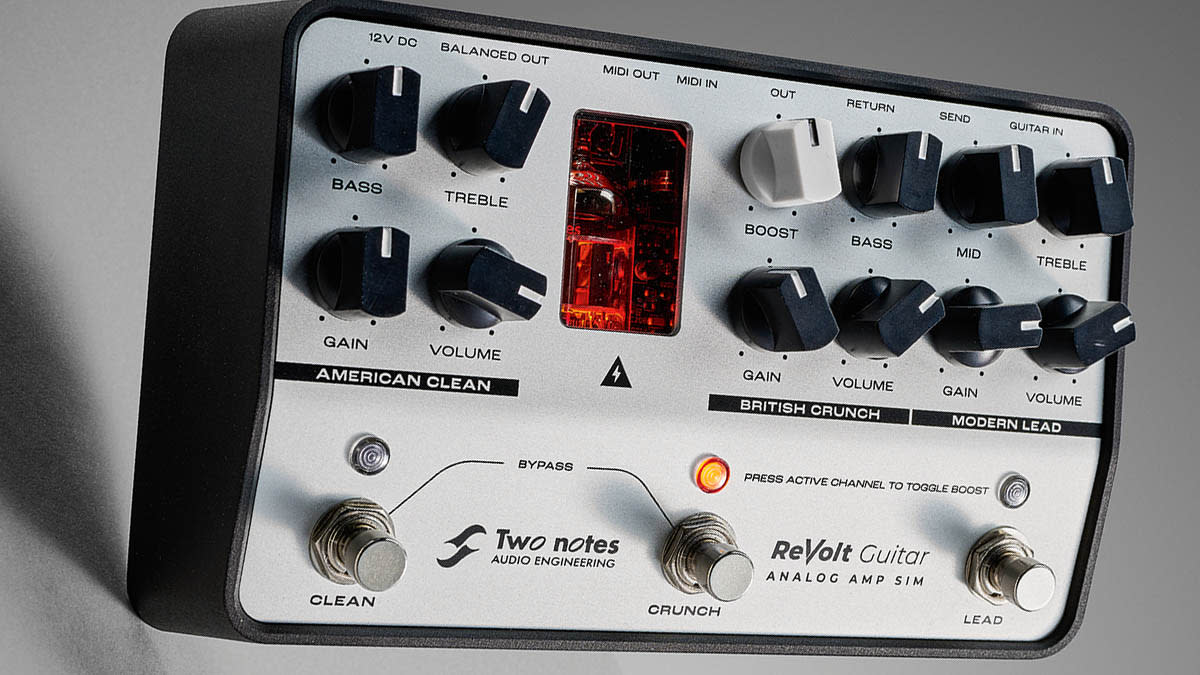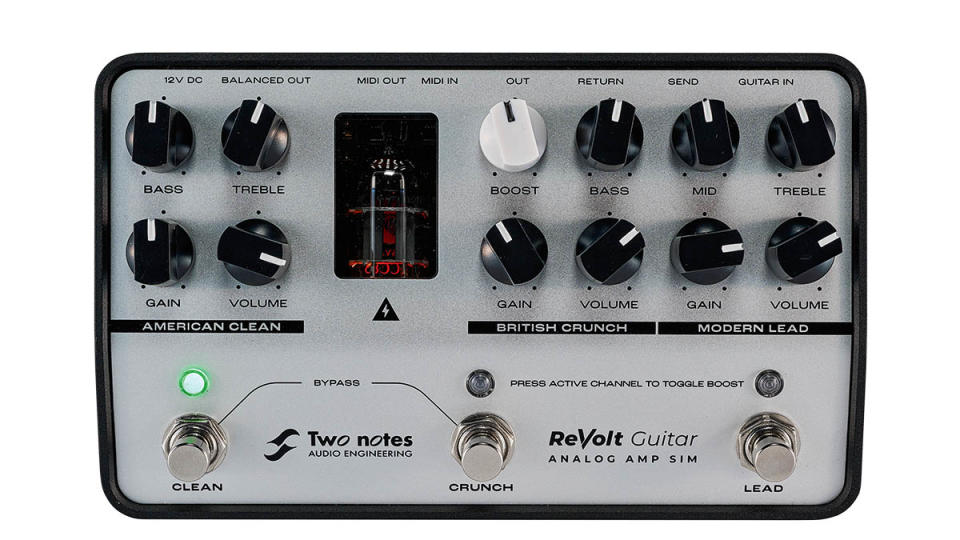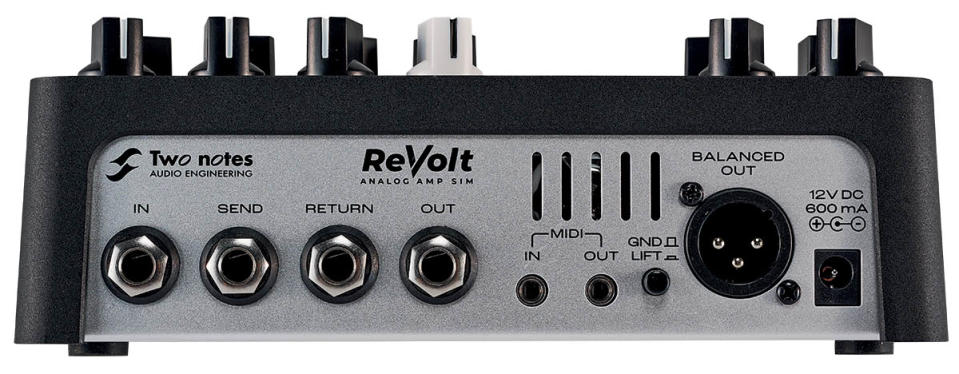Two Notes ReVolt Guitar review

The guitar amp market right now is more diverse than ever. From traditional combo amps and heads to profiling and modeling, we’ve now entered the ‘pedalboard era’ when it comes to plugging in: floor-based preamp and amp solutions that negate the need to carry a head altogether.
However, that’s where things become less clear. Some pedal-amps are equipped with power stages and can serve as the backbone to your entire rig.
Others offer a choice of regular outputs for sending to a power amp or active cabinet, or emulated outputs for going direct to a PA or audio interface for recording. And some have the job lot.
So, what’s Two Notes’ ReVolt Guitar? Well, the brand calls it an ‘analog amp sim’. That’s nothing new – ask your uncle about his SansAmp – but essentially, it’s a three-channel-plus-boost, valve-equipped preamp that acts as your front end.

It’s equipped with an ECC83 preamp valve running at high voltage, and on the back there’s an effects loop, MIDI (via 3.5mm jacks), plus a balanced XLR output. On the front, there’s more connectivity thanks to an aux-in and headphone socket, plus switching options for using the ReVolt in a four-cable configuration and the on-board cab sim.
Here, we get analog speaker emulation based on a Marshall Slash Jubilee 4x12” cab, and Two Notes has provided access to its impressive DynIRs digitally with a lifetime license for Torpedo Wall Of Sound.

Tone-wise, we have a Fender-aping American Clean, Marshall approximation British Crunch, and higher-gain Modern Lead channel based on a Soldano SLO-100. The Crunch nails those woody Hendrix semi-cleans, and with more gain and a push to the mids we’re in classic rock territory.
The Modern Lead channel is perhaps the most satisfying, even if you’re not after out-and-out filth. The overdrive is thick, rich with harmonics and has plenty of gain. The boost is applicable to each channel by pressing the channel switch a second time, with its level governed by the white Boost control – and it’s as simple to use as that!
So the name of the game is flexibility and routing. ReVolt can be many things in different situations, from an amp-expanding three-channel pedal, recording front end, practice tool, or a link between pedalboard and speakers. It’s a shame there’s no way to load IRs into the ReVolt for recall on stage. Likewise, if you want to run it into the software, you’ll need an audio interface.
If you’re looking for a complete solution for every scenario, this isn’t quite it. However, if you’re tired of getting bogged down, the ReVolt delivers the stuff you need most without the things you don’t.
Specs
PRICE: $399 / £349
TYPE: Analog amp simulator
VALVES: 1X ECC83
CHANNELS: Clean, Crunch, Modern Lead
SOCKETS: Input, output, FX send/return, balanced output MIDI I/O, aux-in, headphones
CONTROLS: Gain/volume per-channel, two-band EQ (Clean channel) three-band EQ (Crunch/Modern Lead channel), Boost level, four-cable switch, cab sim switch
CONTACT: Two Notes Audio Engineering

